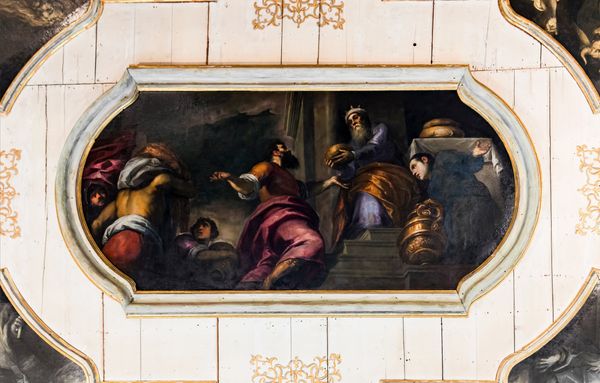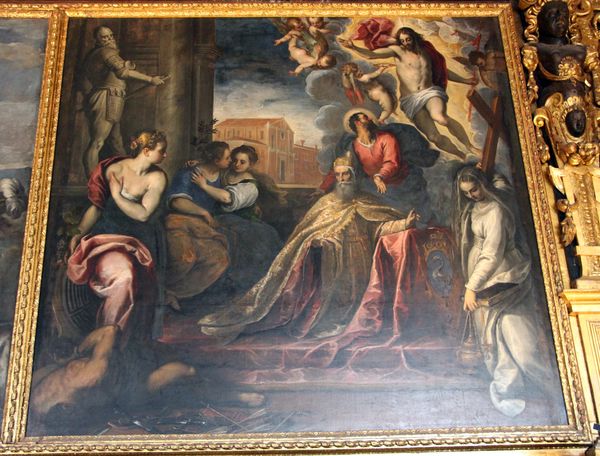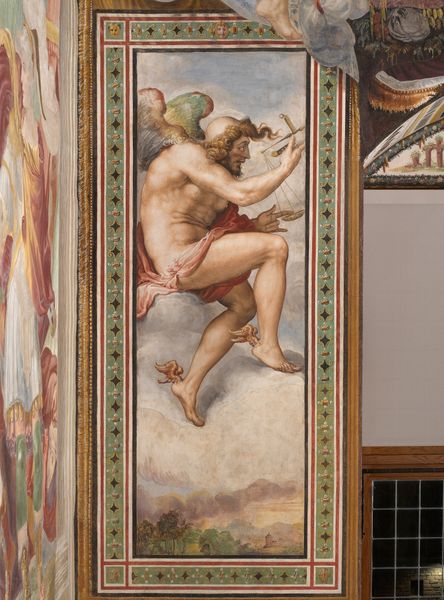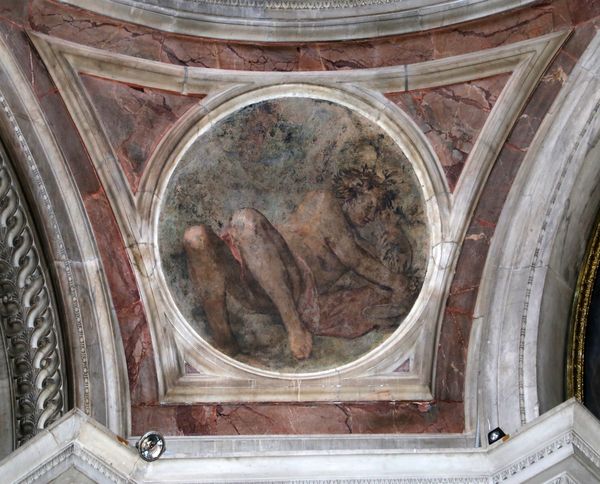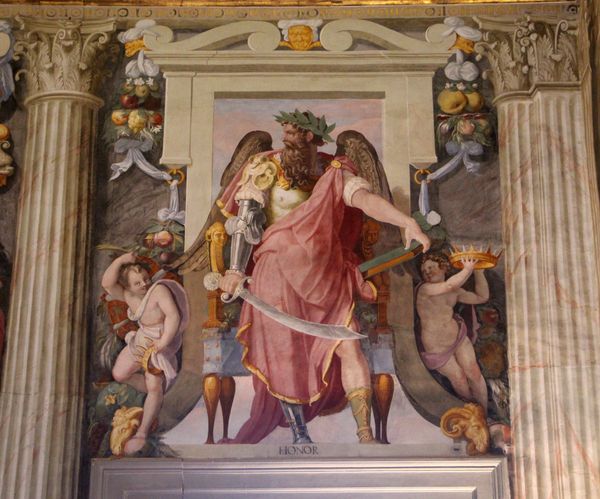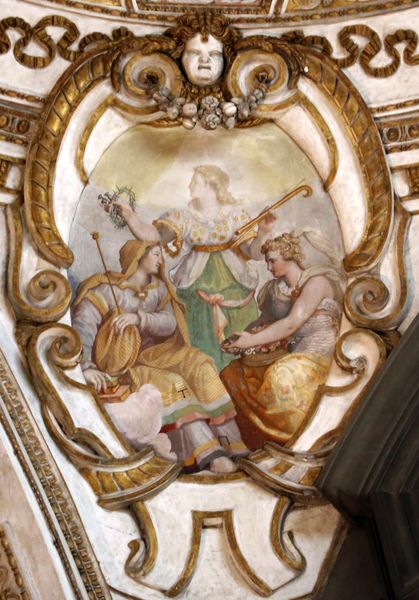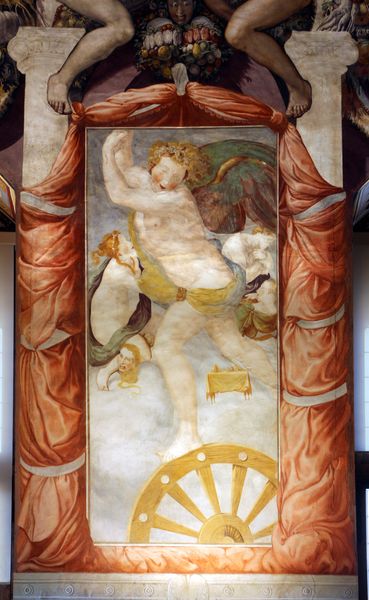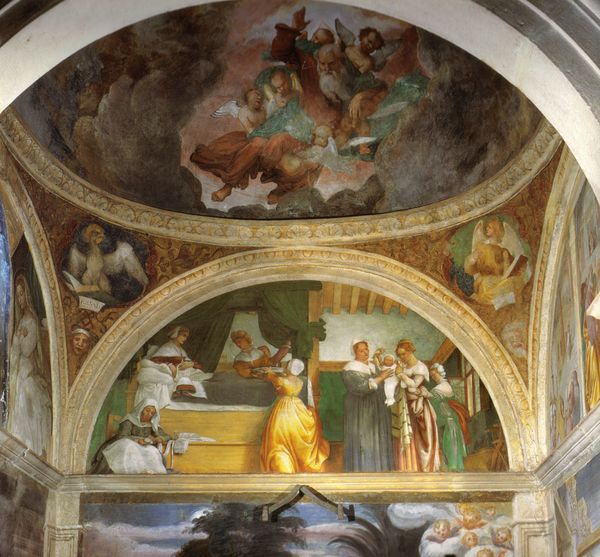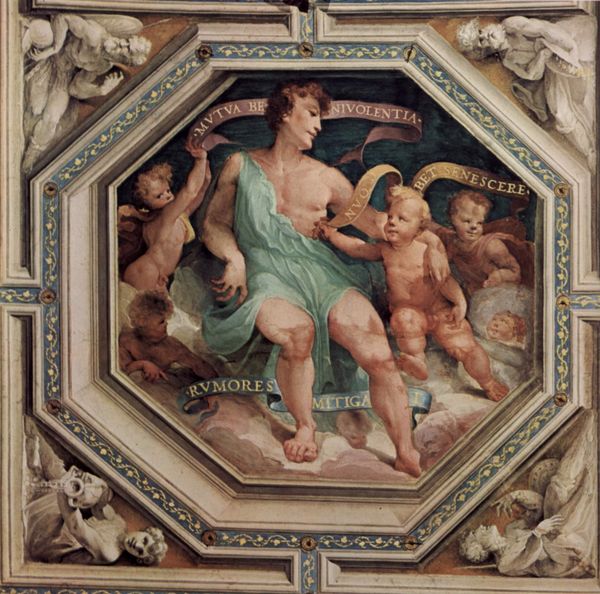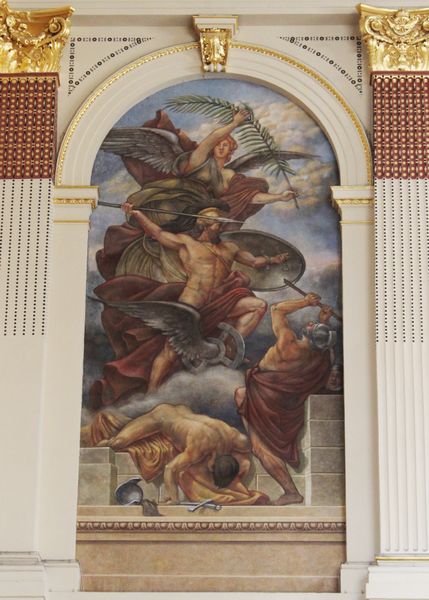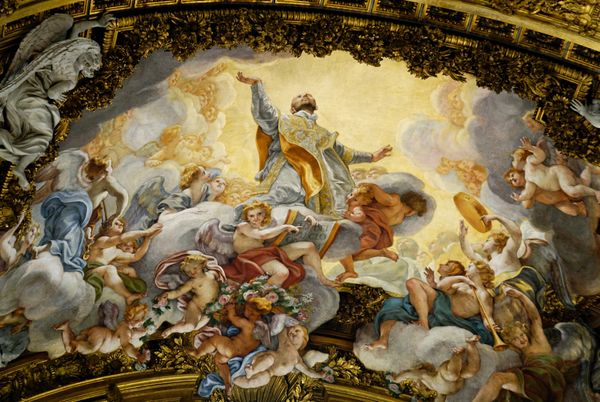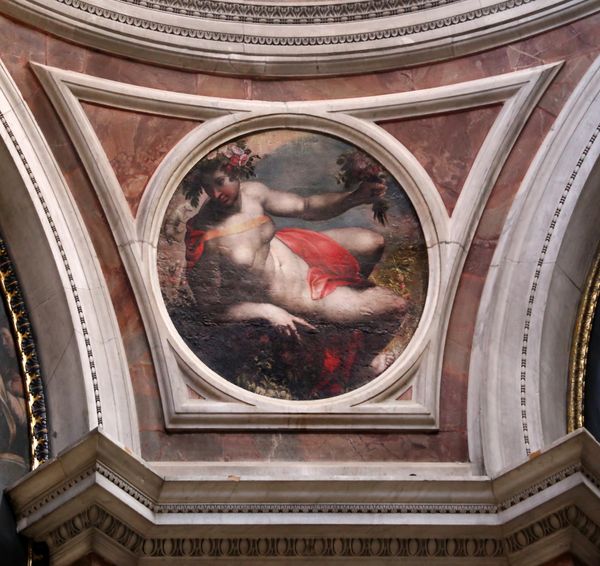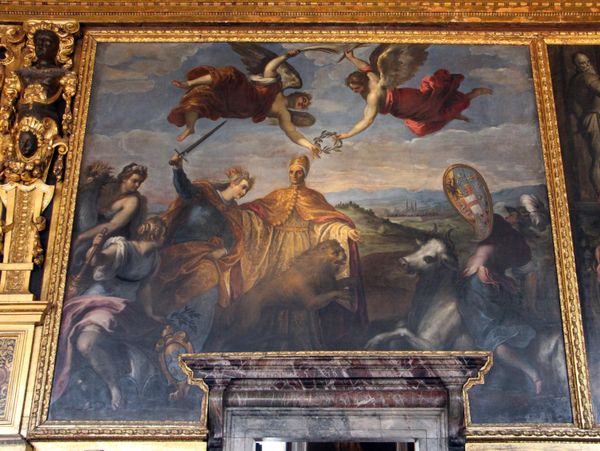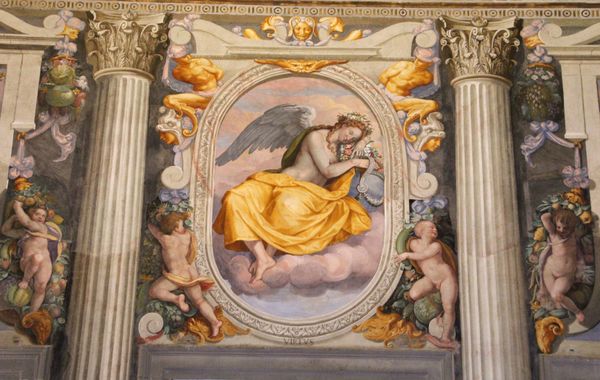
Elia nutrito dall'angelo 1593
0:00
0:00
palmailgiovane
I Gesuiti (Church of Santa Maria Assunta), Venice, Italy
painting, oil-paint
#
narrative-art
#
painting
#
oil-paint
#
mannerism
#
figuration
#
mythology
#
history-painting
Copyright: Public domain
Editor: This is "Elijah Nourished by the Angel" painted in 1593 by Palma il Giovane. It's an oil painting and it seems to be part of a ceiling, judging by its location. The scene has a sort of dreamlike quality, with these figures floating on clouds. What do you see in this piece? Art Historian: From a materialist perspective, it's interesting to consider how this ethereal scene is constructed from earthly materials. Look at the density of the oil paint, its very viscosity lending a weight to the floating figures. Do you see how the angel's robe, rendered with thick, deliberate brushstrokes, becomes an object of labor, a physical manifestation of devotion? Editor: That's a completely different way of looking at it. I was focused on the story itself! I guess I didn't really think about the physical making of it so much. Art Historian: Exactly! The pigment itself had to be sourced, ground, and mixed by someone. That process tells a story too. What kind of workshops or studios existed in Venice at that time to produce the paints? What level of mastery was needed, and how were these skills taught? All these practicalities speak volumes about the socio-economic context in which Palma operated. Editor: So you're saying the *materials* used tell us about more than just the visual aspects of the artwork. Art Historian: Precisely! This painting’s original location also adds context; the church ceiling in Venice creates a dynamic relationship between the viewer and the artwork’s material presence. It becomes integrated within the architecture itself, as the church acts almost as its canvas. Editor: That makes so much sense! I never really thought about where paints came from. That context enriches everything. Art Historian: Indeed. By looking at the physical conditions of production and display, we understand it beyond simply representing religious narratives, and learn about labor practices, economic dynamics, and spatial contexts as essential layers of meaning-making. Editor: Well, thanks! I’ll definitely start thinking about the 'how' and 'where' when I look at art from now on.
Comments
No comments
Be the first to comment and join the conversation on the ultimate creative platform.
